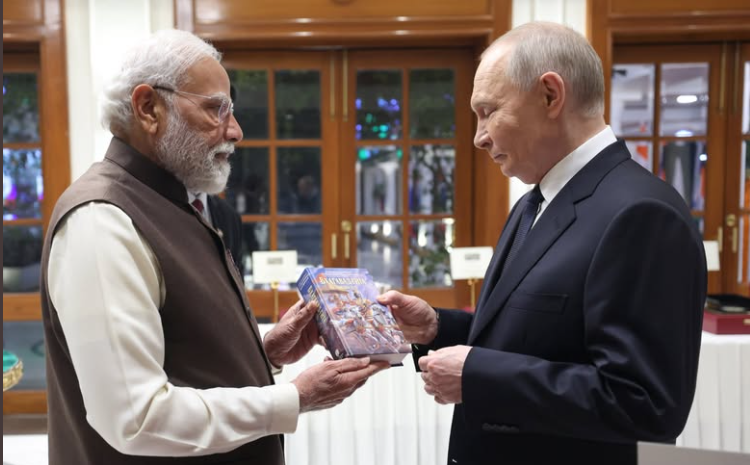China-US Tussle Over Semiconductors: What Does It Imply For India And The World
- InduQin
- Nov 4, 2022
- 4 min read

China and the United States are embroiled in a full-fledged technology war with semiconductors at its core. What started as a round of tit-for-tat trade sanctions by former US President Donald Trump’s administration against Chinese products flooding US markets, offshoring of US manufacturing facilities, and a massive trade deficit, has now taken the form of a ‘strategic competition’ between the world’s top two economies.
Three documents —the US National Security Strategy (NSS), National Defense Strategy (NDS), and Chinese President Xi Jinping’s Work Report to the 20th Party Congress of the Communist Party of China— provide a glimpse into the nature of the competition and the likely approaches to be taken by both the countries to out-compete each other.
These documents point to the likelihood of a divided techno-political system in the future where countries will have to choose between one of the two camps. This presents opportunities and challenges for India, which is leveraging ahead with an independent foreign policy and strategic autonomy. The NSS focuses on climate change and competition with China as the two major challenges for the United States in the near future and technology undergirds both. While the race for the setting up of standards for these data-dominant technologies —such as artificial intelligence (AI), quantum computing and the internet of things (IoT)— is heating up, the United States has imposed a new set of export controls that severely constrict China’s ability to manufacture advanced or leading-edge chips with US proprietary software or utilise US personnel in its facilities.
The aim of these export controls is not only to restrict the export of chips but also the know-how of the manufacturing process itself. These can be the opening shots of what the United States calls the integrated deterrence approach, an operating philosophy comprising the various branches of the government, allies and partners, all domains of warfare, and finally all methods — conventional and grey zone.
The complex world of semiconductors The manufacturing of semiconductors is an extremely complicated enterprise which converts silicon ingots into chips used for almost every electronic application, including space travel, AI, computers, autonomous vehicles, washing machines, missile systems.
The manufacturing is divided into three broad phases, with each phase and its sub-phase dominated by a handful of companies headquartered in select countries. The semiconductor supply chain is fairly internationalised, though not necessarily globalised.
In the first phase, the circuits are designed on customised software using intellectual property (IP) cores or modules. The software, known as electronic design automation (EDA) tools and IP cores, are dominated by US companies.
In the second phase after the circuits are designed, they are sent to a foundry or a fabrication plant (fab). The fabs employ expensive machines such as the Extreme Ultra Violet (EUV) Lithography machine, priced at $150 million apiece and manufactured by the Netherlands-based ASML, which holds a global monopoly on this equipment. In the third phase, the chips are assembled, tested, and packaged into different shapes and sizes using increasingly sophisticated techniques in order to fit them into various devices. For now, the United States has ensured that China cannot access this machine, effectively stopping China at a particular level of technology.
The US NDS of 2022 provides the tools for completing the objectives set out in the NSS. The two major pillars of NDS are the Joint Force and Campaigning, which are meant to utilise technologies such as AI, quantum computing, and 5G communication to enhance the readiness of US forces to embody a multi-domain operating mindset and hewing close to the concept of the Chinese Strategic Support Forces (SSF). It brings out in open US cyber operations meant to ensure the country’s cyber presence in other countries’ networks in order to pre-empt attacks against American and its allies’ networks.
Chinese retaliation to US efforts Chinese President Xi Jinping’s Work Report to the 20th Party warns against external attempts to blackmail, contain, blockade, or exert pressure against China, marking a direct reference to America’s tightening of controls against Chinese tech companies in the last few years.
Xi’s focus on self-reliance is visible throughout the report and the desire to create a separate and independent technological system for China. National and regional champions have been designated — private industries which will be ‘guided’ by the Party in a strategic direction for fulfilling the twin goals of a modern People’s Liberation Army (PLA) by 2027 and a fully developed nation by 2049. The Work Report also calls for boosting research in strategic industries such as deep sea and deep earth probes, super-computers, satellite navigation, quantum computing and bio-technology. He acknowledges that the current state of research in science and technology (S&T) is not strong enough and secure and reliable energy supply chains will be required to achieve this.
The continuing competition between the United States and China will intensify in the coming years. It will be driven by data and its substrate, that is, semiconductors, forming the core of the next confrontation between two techno-political systems. This will be compounded by pan-border threats such as climate change and pandemics to create unique conditions where confrontation, competition, and collaboration will go hand-in-hand.
In this scenario, it is up to countries like India to mediate between these two systems and/or come up with open-domain and open-source formats which will enable the rest of the world to enjoy the dividends of these technologies without the compulsion of choosing a technology standard and thereby an ideological system.
Read More at https://www.outlookindia.com/international/what-us-china-tussle-over-semiconductors-means-for-india-and-the-world-news-233822







Comments